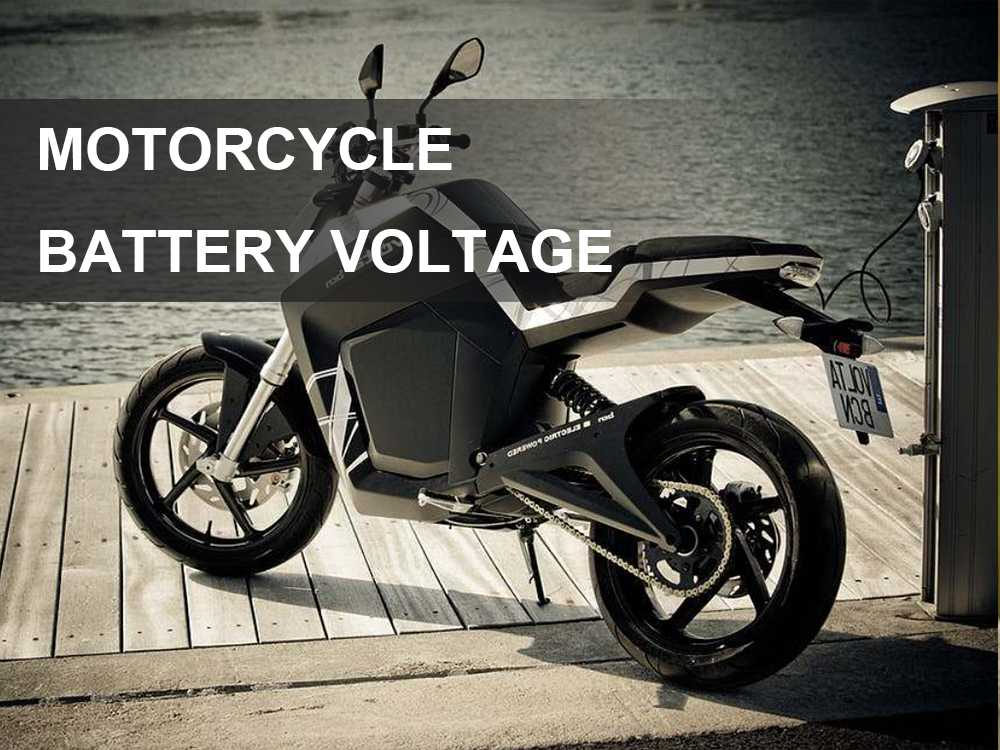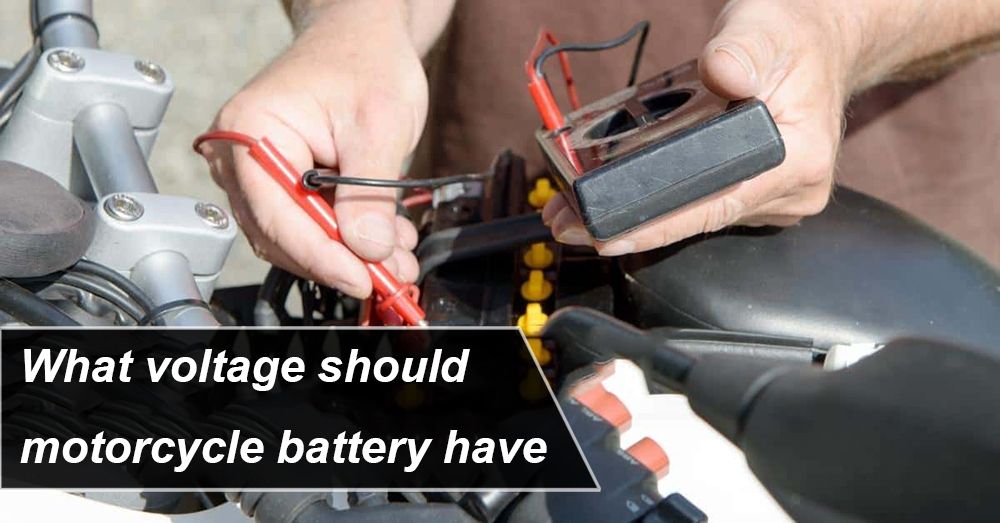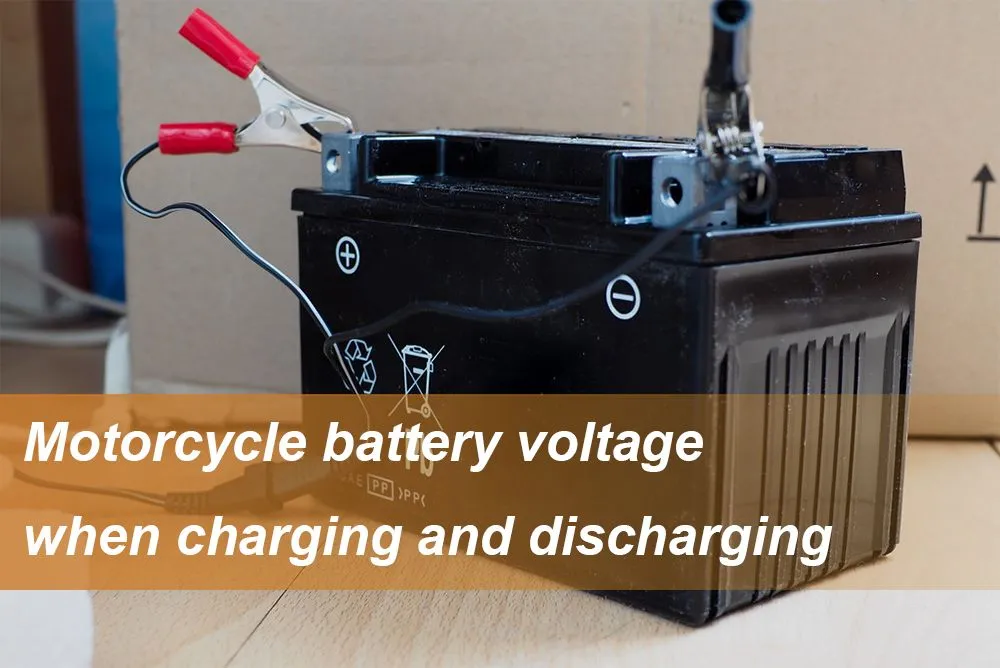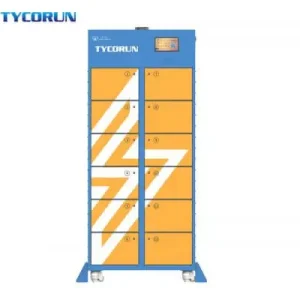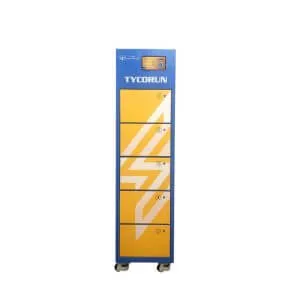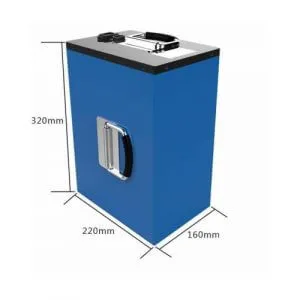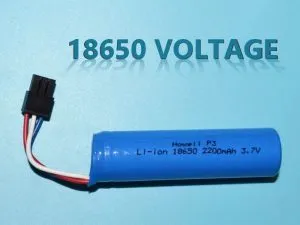Understand the impact of lithium-ion motorcycle battery voltage
Knowing the proper battery voltage for the motorcycle will help ensure a smooth ride every time. In this article, we’ll discuss what you need to know when it comes to understanding lithium ion motorcycle battery voltage and how to keep the motorcycle in top shape with lithium-ion batteries.
Mainstream motorcycle battery types introduction
Lithium-ion batteries, AGM batteries, and Gel motorcycle batteries are the common three categories. The most common battery is the lithium battery. Lithium-ion batteries are the most popular because they’re light easy to find and install, and have a long life. Nowadays, lithium-ion batteries are used everywhere due to its high specific energy and high voltage operations.
What voltage should motorcycle have
If the battery voltage of motorcycle is too low, it will not start. If the voltage is too high, it can overcharge and damage the battery. When it comes to motorcycle battery voltage, the voltage is typically measured in volts (V). Most motorcycle batteries have a nominal voltage of 48V/60V/72V.
The lithium ion motorcycle battery voltage is determined by the number of cells it contains. Each cell is capable of producing a specific amount of voltage, with most cells producing around 3.2-3.7V. A 48V battery would therefore have 14 cells, while a 60V battery would have 17 cells.
When the motorcycle battery voltage drops to discharge cut-off voltage, it needs recharging. If you let the motorcycle sit for more than 3 months without riding it, you should check the battery to make sure it has enough power to start the motorcycle. By checking the lithium ion motorcycle battery voltage regularly can keep the performance of the motorcycle as well as the battery in good condition.
What is a good voltage for a motorcycle
The voltage of the motorcycle should be kept between the charge and discharge cut-off voltage. For example, a 3.6v ternary lithium cell has a charging cutoff voltage of 4.2v, the discharge cutoff voltage is 3v, so the charge/discharge cutoff voltage of the 48v battery pack of motorcycle with 14 cells in series is 58.8v/42v.
How do you test the motorcycle battery voltage
To test the motorcycle battery voltage, it is needed to use a voltmeter. The best way to do this is by connecting it directly to the positive terminal on the battery and reading off its output as it goes up and down as you turn on or off lights using that same terminal.
When the battery is fully charged, its voltage should reach the charge cut off voltage; if it’s below this amount, there may be an issue with one of its cells or cables (such as corrosion).
Motorcycle battery voltage when charging and discharging
While discharging the battery of motorcycle, the lithium ion motorcycle battery voltage is lower than it would be when fully charged. When you start to charge the battery of motorcycle, however, the battery voltage will increase until it reaches its highest point.
Because of this phenomenon, they can provide power to equipment, thus they’re used in many different situations—from Home energy storage Powerwall battery to motorcycle—batteries can be charged or discharged at any point during their life cycle.
How to know the state of health of the battery from the voltage
The motorcycle battery voltage is a good indicator of its health. The higher the motorcycle battery voltage within the normal voltage range, the better the battery is doing and vice versa.
One should check the voltage after a full charge and if it’s reach charge cut off voltage then you can be sure that the motorcycle has been well maintained. If however, the lithium-ion motorcycle battery voltage falls below cut off voltage then this indicates that there may be problems, so get them checked out as soon as possible!
What factors will affect motorcycle battery voltage
● Temperature – The higher the temperature, the lower the motorcycle battery voltage. The normal range for most motorcycle batteries is between 10 degrees and 40 degrees Celsius (50 degrees to 104 degrees Fahrenheit). This temperature will keep the lithium-ion battery’s health in a good condition.
● Capacity decay – As a battery of motorcycle gets older, its capacity decreases and its state of charge becomes less accurate. This can lead to problems such as low motorcycle battery voltage or requiring more frequent charging. If the motorcycle has been sitting for too long without being used or driven very much, the battery may need some extra attention before it’s ready for riding again.
● Age – New motorcycle batteries will likely have a higher DOD than an older one because it hasn’t been used much yet and therefore hasn’t lost much energy through self-discharge over time; however that doesn’t mean that old batteries aren’t still good enough for use on newer motorcycles!
What is the best voltage for charging a 72V motorcycle battery
The best motorcycle battery voltage to charge 72V motorcycle batteries should not exceed 86V and it should not be less than 56V. Keeping the motorcycle battery voltage over this range can cause critical damage to the battery.
What happens if charging voltage of motorcycle battery is too high
If the motorcycle battery voltage is too high while charging, the battery will overheat and be damaged. The battery will also fail to charge to full capacity. Some people think of fast charging of lithium-ion batteries to save time and increase voltage and current, but too high voltage will lead to damage the battery. All mainstream motorcycles use lithium ion batteries, and although different brands use slightly different technologies, the basic principles are the same.
Battery specification in swapping battery station
The TYCORUN SWAPPING BATTERY STATION is the ideal location for lithium ion battery swapping. For swapping the lithium-ion battery, it includes a convenient and secure function. The material of the TYCORUN SWAPPING BATTERY STATION cabinet has 1 millimeter to 1.5 millimeters metal shell, making the case more solid and protective.
Click on the image for more product information
The station has a maximum 6kw power output and each slot’s maximum power is 900w. Each slot has its own control panel, and the wiring system has been thoughtfully laid out. It features an anti-thunder function and a flood prevention mechanism that turns off automatically when the water reaches a certain level. It has 12 and 5 charging slots.
In the cabinet, there are 48v, 60v, and 72v also for motorcycle battery voltage. It implies that it can simultaneously charge three different types of lithium ion batteries with specifications.
Conclusion
The best way to test the lithium ion motorcycle battery voltage is by using a multimeter. One will also need to ensure the motorcycle has an intelligent charging system or that you are able to manually charge it themself before doing so, otherwise this could damage the battery.
Related product
-
48v lithium ion battery
72V/60V/48V battery swapping station with 12 ports for electrical motorcycle batteries
Rated 0 out of 5Read more -
48v lithium ion battery
36v 60v 72v 5 ports motorcycle lithium battery swap station
Rated 0 out of 5Read more -
72v lithium ion battery
72 volt 50ah LifePO4 battery applietd for electric motorcycle swap system
Rated 0 out of 5Read more

